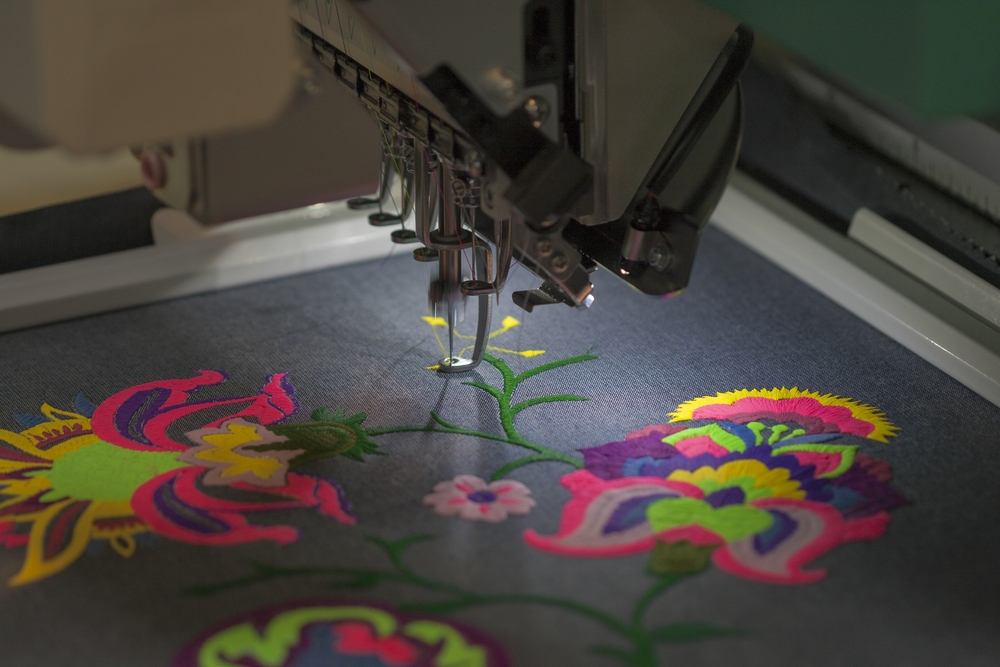Streamlining the Art of Embroidery Digitizing: Step-by-Step Overview
As modern technology proceeds to development, the digitization process has actually become extra accessible, allowing enthusiasts to bring their intricate styles to life with ease. In this overview, we will untangle the complexities of needlework digitizing, breaking down each action carefully to improve the process and equip both beginners and skilled embroiderers alike.
Comprehending Embroidery Digitizing Software
Embroidery digitizing software application acts as a critical device for changing intricate designs right into electronic formats compatible with needlework machines, promoting precise stitching and modification. This specialized software application permits customers to import various picture documents formats, such as JPG or PNG, and convert them right into needlework machine-readable formats like DST, EXP, or PES - Digitizing for Embroidery. By using features like stitch modifying, padding options, and string shade selection, digitizing software application makes it possible for individuals to regulate every facet of the style procedure
Moreover, progressed embroidery digitizing software program uses devices for creating complicated layouts, changing stitch density, and incorporating intricate information. Individuals can also preview the style before stitching it out, making sure precision and lessening errors. Furthermore, numerous software program programs provide automated features that aid streamline the digitizing procedure, conserving effort and time.
Recognizing the capabilities of needlework digitizing software program is important for accomplishing top quality cause needlework tasks. By understanding this device, embroidery enthusiasts and specialists can release their creative thinking and bring detailed designs to life with accuracy and efficiency.

Selecting the Right Style File
After familiarizing on your own with the capacities of embroidery digitizing software, the following essential step in the process is selecting the right layout declare your task. Digitizing for Embroidery. When selecting a style declare needlework digitizing, it's necessary to take into consideration the complexity of the style, the dimension of the final product, and the sort of textile you will be dealing with
For detailed designs with fine details, a high-resolution picture or vector file is suggested to ensure that the embroidery machine can accurately recreate the design. In addition, the size of the end product plays a significant role in selecting the right style file. Bigger styles might call for greater resolution documents to maintain quality and sharpness.
Furthermore, the kind of textile you will be embroidering on affects the option of design data. Different materials may require modifications in the layout file to make certain that the stitches are properly aligned and the layout looks like meant. By meticulously selecting the best layout file based on these aspects, you can set on your own up for a successful needlework digitizing procedure.
Digitizing Tools and Techniques
Utilizing specialized software program and accuracy techniques, digitizing tools are crucial in changing elaborate styles right into embroidery-ready data. Embroidery digitizing software, such as Wilcom, Hatch, or Embrilliance, provides the needed platform to transform artwork right into stitch information. These programs supply features like stitch editing and enhancing, rug choices, and text devices to guarantee the design equates perfectly onto fabric.
One of the essential techniques in digitizing is developing a clear path for the needlework maker to comply with. This entails digitizing each component of the design with precision, figuring out stitch kinds, densities, and instructions. By utilizing devices like digitizing tablet computers or software-specific plugins, embroiderers can attain a high degree of precision in their digitized designs.
In addition, grasping the art of rug sewing is crucial for generating quality embroidery. Underlay stitching stabilizes the fabric and develops a structure for the style, making certain that the end product is both aesthetically enticing and long-lasting. By recognizing these digitizing tools and techniques, embroiderers can boost their craft and bring complex designs to life with accuracy and efficiency.
Customizing Stitch Kinds and Instructions
Having actually developed a foundation imp source in digitizing devices and techniques, a crucial aspect in progressing needlework workmanship hinges on personalizing stitch types and instructions with precision and purpose. The choice of stitch types can considerably affect the general look and texture of the embroidered layout. Satin stitches, recognized for their smooth and shiny coating, work well for developing borders and text. On the various other hand, fill stitches are ideal for covering bigger areas efficiently. By purposefully combining these stitch kinds, embroiderers can achieve depth and dimension in their styles.
In addition, the instructions of stitches plays a crucial role in enhancing the visual appeal of the final embroidery. By go to my blog experimenting with different stitch angles and patterns, embroiderers can bring their designs to life with impressive detail and intricacy.
Screening and Refining Your Digitized Layout
To make certain the precision and top quality of your digitized layout, detailed screening and improvement are necessary action in the needlework digitizing process. Once you have finished the digitization of your layout, it is vital to examine it prior to continuing with the actual embroidery. Evaluating enables you to identify any kind of possible concerns such as string breaks, sew thickness issues, or design distortions that may impact the last outcome.

After screening, it is necessary to improve your digitized style based on the responses from the examination sew-out. This may include tweaking stitch setups, changing densities, or making adjustments to the overall style to achieve the preferred result. By iterating through testing and improvement, you can adjust your digitized design to excellence before progressing with Source the real needlework procedure.
Final Thought
In conclusion, grasping the art of embroidery digitizing needs a thorough understanding of the software program, selecting the right layout documents, making use of digitizing tools and strategies, tailoring stitch kinds and instructions, and screening and improving the digitized layout. By adhering to these steps, embroiderers can streamline the digitizing process and develop premium stitched styles with accuracy and performance.
Comments on “Custom Digitizing for Embroidery: Customized to Your Needs”